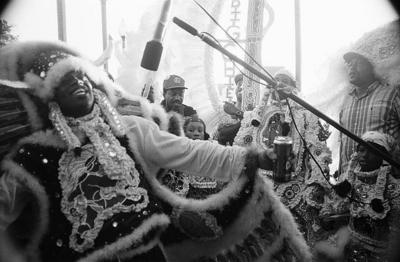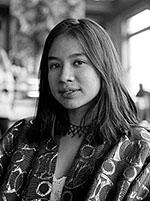Mardi Gras Indians
I received a reaffirming e-mail today from someone who had read my blog, and commented, “Those that think money is what richness is all about, should read this and know that richness in spirit and love will trump money every time.”
What a perfect quote to introduce the spirit-rich tradition of the Mardi Gras Indians, who happen to be some of New Orleans’ poorest residents.
I first heard about the Mardi Gras Indians through my bus driver, Mr. Chuck. He told me a story about a friend of his who had been a Mardi Gras Indian Chief, and had been shot so many times in the stomach that he couldn’t eat solid food.
Apparently, Mardi Gras used to be even more lawless than it is today, and the Mardi Gras Indians were largely responsible.
The Indians are one example of how every cultural tradition that enters New Orleans and stews for a while finds another life, another soul, and eventually becomes a different thing entirely. Like the base of a good gumbo, time on the stove—in the heat and humidity—adds richness and flavor.
So the Mardi Gras Indians took the culture of the Native Americans, brought it to New Orleans, let it stew for a while, and added Mardi Gras. And here’s what you get:


So why were poor descendents of slaves interested in Native American culture? Back in the days, Native Americans helped blacks from New Orleans escape slavery by bringing them through their tribal network and on towards freedom. In honor of this incredible kindness, black New Orleanians formed their own Mardi Gras Indian tribes, each with a distinctive color costume and pattern of beadwork. Traditionally, Mardi Gras Indians make a new costume every year, and burn the old one after Mardi Gras is over. They spend hundreds upon hundreds of hours each night sewing tiny beads into the elaborate designs that are their signature, and stitching feathers into their towering headdresses.


Come Mardi Gras, they come out in full force to sing, dance, and compete for the honor of being “the prettiest chief of all,” gold teeth and all. That honor doesn’t come without sacrifice, and back in the days, armed brawls used to break out in the clamor for recognition. Indians would bust out revolvers and battle axes and take a drunken swing at each others feathers, if not shooting each other outright. The fracas would ensue until one tribe said “Homba!” in recognition that the other tribe’s chief was “the prettiest chief of all.”
Eventually, the violence got out of hand, and the mayor of New Orleans threatened to shut down Mardi Gras. The street fights turned into impromptu singing, dancing and beauty competitions, and the great Mardi Gras Indian bands—like the Wild Magnolias —were born.
Always broke and chock full of soul, the Indians come out each year and party their hearts out.



0 Comments:
Post a Comment
<< Home